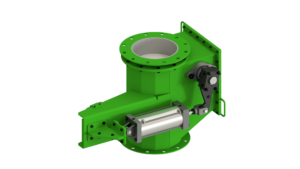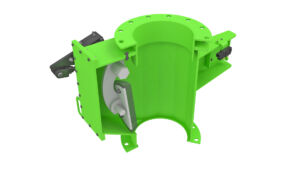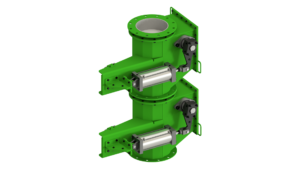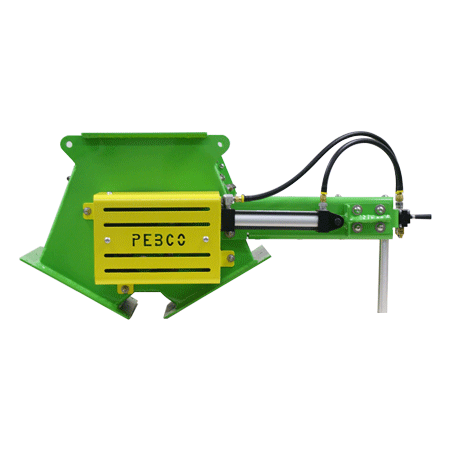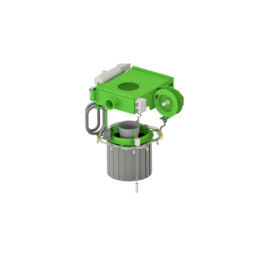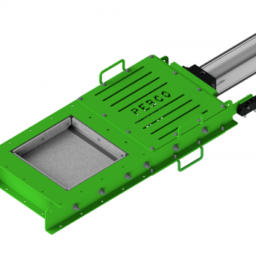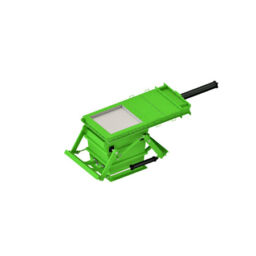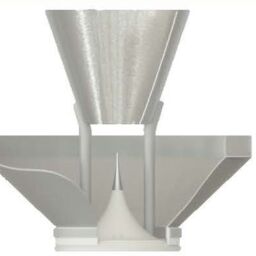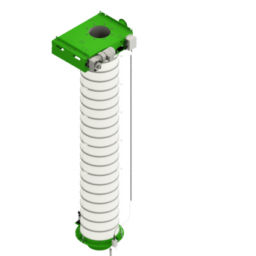Positive Seal Valve (PSV)
PEBCO®’s Positive Seal Valve (PSV) provides positive flow termination in gravity flow and differential pressure applications for powders, slurries, and liquids up to 14.9 psig.
- Valve is rated for 14.9 psig through the body and across the sealing disc.
- Tested to 25 psig through the body and through the blade with zero leakage
- Tested to 10,000 cycles with no appreciable wear
- Sealing disc is constructed of 80 durometer urethane and replaceable from outside the valve.
- Tapered pivoting disk mates with tapered seat on inlet throat to insure positive sealing.
- Available in carbon steel, stainless steel, and other alloys.
- Temperature rated to -40° to 180° F.
- Pneumatic or Hydraulic actuation is the preferred operation method.
- Value can be used for metering applications as well as positive shutoff.
- Designed for slurries, liquids, aerated dry bulk solids, specialty bulk powders & granulated materials.
Features
There is no other product on the market like the Positive Seal Valve.
The main advantage of the PSV is that it has a zero leakage seal design. Rotary vane airlock/feeders and screws leak air as do double dump valves due to a metal to metal seat. The PSV incorporates the cast urethane sealing disk with a tapered sealing face to a tapered throat seat. This tapered design is self-compensating for wear.
The PSV is rated to 14.9 psig through the seat and to atmosphere. Wear parts are very easily replaceable – the sealing disk can be replaced through an access panel and does not require removing the valve from service. Because the performance of the PSV greatly exceeds both the double dump valve and rotary vane airlock, the price difference is a little higher than a double dump valve, however when comparing the price point with a rotary vane airlock, the PSV is lower.
No other valve design provides all these features in one valve.


